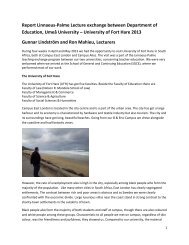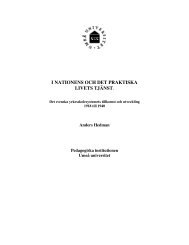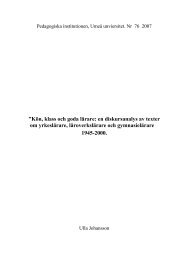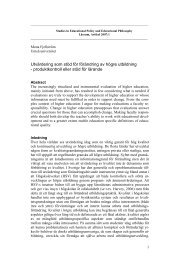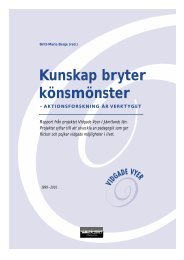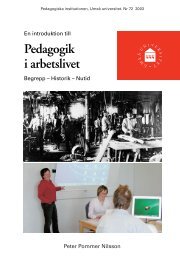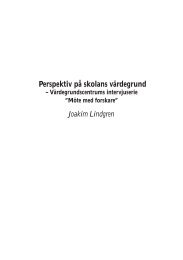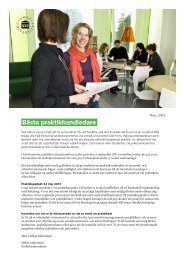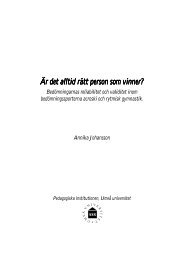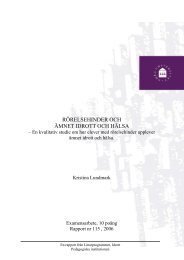IDENTITETSSKAPANDE I STUDENTFÖRENINGEN ULRIKA ... - DiVA
IDENTITETSSKAPANDE I STUDENTFÖRENINGEN ULRIKA ... - DiVA
IDENTITETSSKAPANDE I STUDENTFÖRENINGEN ULRIKA ... - DiVA
Create successful ePaper yourself
Turn your PDF publications into a flip-book with our unique Google optimized e-Paper software.
S U M M A R Y<br />
were critical events in which discourses of gender and class were activated.<br />
They were about norm transgressions or remarkable events, and they have been<br />
analysed in more detail as manifestations of ideological dilemmas. The analysis<br />
resulted in a preliminary description of the ideal identities.<br />
In the next step a Foucault-inspired genealogical analysis was made of texts<br />
about students, student life and students’ societies in different time periods.<br />
The texts are primarily written by researchers in History or History of Ideas. I<br />
have read and interpreted them as definitions of different discourses about<br />
students through the ages. This showed that certain old ideas, or images of<br />
students, were still active and significant in my informants’ creation of identity.<br />
I also found that certain strategies, rituals and practices that earlier on shaped<br />
students’ identities were still staged in the students’ societies. The different<br />
historical meaning of the concept ‘student’ thus function as ‘presuppositions’<br />
of what characterises a student, and these presuppositions are still manifested in<br />
the ways my informants’ represented themselves. Hence the students’ narratives<br />
could be understood as interplay between the present and the past, and the<br />
preliminary analysis that I had already made of the interview data could be<br />
tightened up.<br />
The ‘Student’ as a Gender and Class Construction: A<br />
Genealogical Analysis of Research on Students<br />
The genealogical analysis, primarily based on earlier research, resulted in the<br />
identification of two discourses about the student. Initially and up until 17th<br />
century Sweden, a guild discourse was prominent. To be included in this, the<br />
male student had to fulfil certain demands, for example to go through the deposition<br />
ritual and place himself at the bottom of the patriarchal hierarchy. As a<br />
member of the university guild, the male student enjoyed the privilege of being<br />
above the general judicial system. Substantial alcohol consumption, violence<br />
and carnivals overturning normal behaviour were part of the student guild’s<br />
social practices. Taken together this made the student appear to be carefree and<br />
irresponsible. Life as a student was seen as a free space in which the student was<br />
allowed to stretch many limits before the seriousness of life in public service<br />
started.<br />
The meritocratic discourse began to manifest itself in the 18th and 19th centuries,<br />
and it constituted the student as a man with the right and ability to be<br />
heard in the public debate. This right and ability was linked to the qualifications<br />
acquired through higher education. The meritocratic discourse had obvious<br />
middle-class overtones, since it was used by the raising middle class in<br />
their struggle against the aristocracy. The student in the meritocratic discourse<br />
was seen as the hope of the nation, and the time of study was no longer a care-<br />
169



